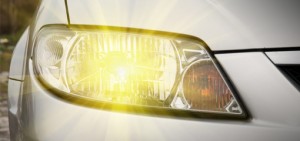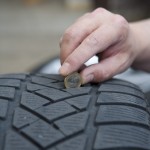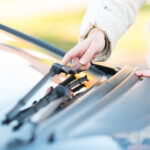 Most of what we talk about here is aimed at testers and garages. This time we’re giving a short run down of the most common MOT fail items for vehicle owners and offering some simple tips to help avoid that dreaded fail. If you’re a tester and often fail vehicles for these reasons, you can help your customers by sharing this information with them.
Most of what we talk about here is aimed at testers and garages. This time we’re giving a short run down of the most common MOT fail items for vehicle owners and offering some simple tips to help avoid that dreaded fail. If you’re a tester and often fail vehicles for these reasons, you can help your customers by sharing this information with them.
1. Headlamp aim
The top fail item for all vehicle types is ‘headlamp aim incorrectly set’. If your headlamp or headlamp bulb has been replaced since the last test then it may be worth checking whether one headlamp is significantly higher than the other, or the aim isn’t too high or low. You can do this by shining the headlamps on a garage door or another suitable surface.
While checking the headlamps, ask someone to sit in the car to operate the rest of the lamps while you walk around the car checking all the other lamps. Don’t forget the hazard warning lamps and the number plate lights. If these don’t work, changing the bulb is usually simple enough, but some headlamp bulbs can be much more difficult and require assistance from a repairer.
2. Tyre tread depth
 Another common fail for all vehicle types is tyre tread depth below the minimum requirement. If any of the tread looks low, insert a 20p coin edge into the main grooves and if the outer rim of the coin is hidden then the tread is probably fine. If you’re not sure, many tyre outlets are happy to do a free check.
Another common fail for all vehicle types is tyre tread depth below the minimum requirement. If any of the tread looks low, insert a 20p coin edge into the main grooves and if the outer rim of the coin is hidden then the tread is probably fine. If you’re not sure, many tyre outlets are happy to do a free check.
3. Windscreen wipers
 Windscreen wipers not clearing the windscreen effectively are another common fail. You can easily check this by operating the wipers and the washers. If the blades don’t clear the water effectively from the screen and leaves areas untouched or smears across the driver’s view then this may result in a fail. Wiper blades do wear over time and become damaged by grit and dirt, so they need replacing at regular intervals. Also if there isn’t any fluid in the washers then this would also be a fail.
Windscreen wipers not clearing the windscreen effectively are another common fail. You can easily check this by operating the wipers and the washers. If the blades don’t clear the water effectively from the screen and leaves areas untouched or smears across the driver’s view then this may result in a fail. Wiper blades do wear over time and become damaged by grit and dirt, so they need replacing at regular intervals. Also if there isn’t any fluid in the washers then this would also be a fail.
The most common failures can be avoided by taking the time to do a simple walk around check of the vehicle before taking it for test. Potential failure items can be easily identified and rectified by owners.
Images courtesy of Shutterstock.com
9 comments
Comment by Dave C posted on
Im hardly surprised by headlamp aim being top of the list. With alot of cars out there having has some front end work before resale meaning incorrect re-fitment, change in ride height for a big number of reasons, as mentioned previously bulb fitment and potholes. Not forgetting alot of VAG cars require front end removal for work. Wonder how many inline tdi's had a timing belt before emissions test then failed on headlamp aim dud to incorrect refitment??
Comment by Chris posted on
I agree with the headlight aim nearly every mot test I do the car fails or prs on headlight aim it's because our roads have so many pot holes or speed humps it takes just a little bump to put the aim out
Comment by karl posted on
If your passenger wiper leaves a few smear marks is this a fail on a mot?????
Comment by jimmy posted on
i would of thought it be either ball joints and bushes seem to be the most common of all mot failures followed by tyre treads, every car i have owned has failed the mot due to a ball joint or bushes failing
Comment by Rob Harris posted on
We are finding that are customers are driving there vehicles to the tyre limit, as at one time they would change tyres at servicing
Comment by Roger posted on
Another common problem is incorrect fitment of a bulb
Comment by Claytons MOT Centre posted on
Most motorists are surprised to learn that a typical windscreen wiper has a usable lifespan of 2 years. Didn't expect headlight aim on being the most common fail item, would have guessed at tyre tread.
Comment by Samantha posted on
A more accurate way of checking your tyre tread depth is to look inside the tread grooves for the tread wear indicator - a raised nobbly bit inside the tread which is set to the minimum tread depth. If your tread pattern wears down to this nobbly bit then you are ON the limit.
Comment by Laurence posted on
Surprised about what the number one cause is, never would have thought of that, would have thought the tread depth would be the number one cause. Something to watch out for when my car next has an MOT test.